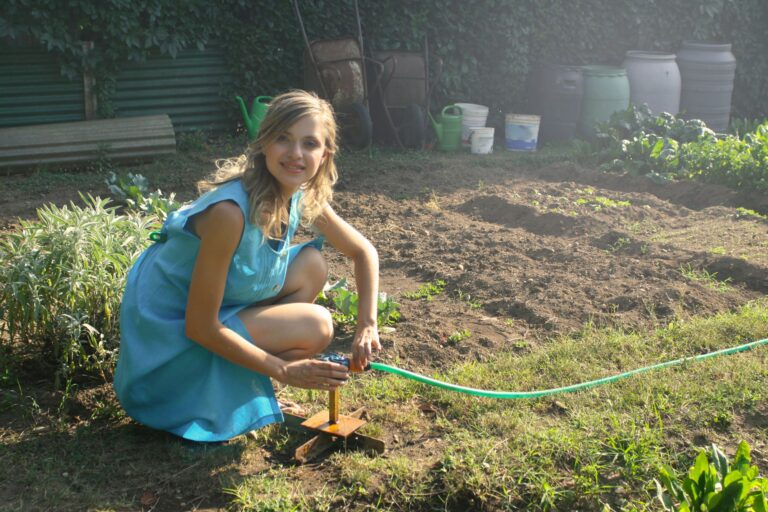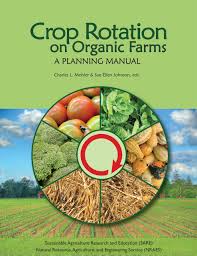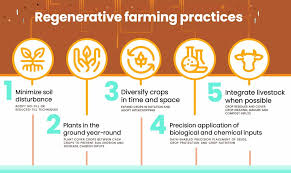A wholesome understanding of cover crops is essential for any farmer looking to improve soil health and sustainability. Cover crops are non-cash crops planted to protect and enhance the soil between regular crop cycles or during the off-season. These crops, often called green manure, play a crucial role in sustainable agriculture by improving soil fertility, reducing erosion, and supporting beneficial organisms.
In this article, we will explore the importance of cover crops, their types, and how to plant them effectively.
Why Use Cover Crops?
Understanding cover crops begins with recognizing their many benefits for farmers and the environment. Here are some key reasons why cover crops are essential:
- Soil Health: Cover crops improve soil structure by adding organic matter, which boosts fertility and enhances soil aeration. They also reduce the risk of soil compaction and improve water retention.
- Erosion Control: The root systems of cover crops help hold soil in place, reducing erosion from wind and water. This is particularly important during fallow periods when the land is bare.
- Weed Suppression: Cover crops compete with weeds for sunlight, water, and nutrients, reducing weed growth and making it easier for farmers to manage fields without relying heavily on herbicides.
- Pest and Disease Management: Cover crops provide a habitat for beneficial insects and microorganisms, which can help control pests and diseases, reducing the need for chemical pesticides.
- Nutrient Cycling: Some cover crops, especially legumes, fix nitrogen in the soil, providing essential nutrients for future crops.
Types of Cover Crops
There are many types of cover crops that farmers can choose from. The type of cover crop that a farmer chooses will depend on their specific needs and goals. Here are some of the most common types of cover crops:
- Legumes: Legumes are cover crops that add nitrogen to the soil. They do this by forming a symbiotic relationship with bacteria that live in their roots. The bacteria convert atmospheric nitrogen into a form that plants can use. Common legume cover crops include clover, peas, and beans.
- Grasses: Grasses can help improve soil structure and reduce erosion. They also provide a habitat for beneficial insects and microorganisms. Common grass cover crops include rye, wheat, and oats.
- Brassicas: Brassicas are crops that can help to suppress weeds and control pests. They also add organic matter to the soil. Common brassica cover crops include radish, turnip, and mustard.
- Winter Rye: Winter rye is a popular cover crop planted in the fall. It is a hardy crop that can tolerate cold temperatures and can be used for weed suppression and erosion control.
- Crimson Clover: Crimson clover is a legume that can fix nitrogen in the soil. It is often used as a spring cover crop and can help improve soil fertility.
- Buckwheat: Buckwheat is a fast-growing cover crop that can be used in the summer. It can help to suppress weeds and improve soil structure.
- Radish: Radish is a cover crop that can be used in the fall. It can help to break up compacted soil and improve water infiltration.
Planting Cover Crops
Cover crops are typically planted in between regular crop cycles or during the off-season. The timing of planting will depend on the specific cover crop and the region’s climate. Cover crops should be planted early enough in the season to allow them to be established before winter or the next crop cycle.
When planting cover crops, choosing the right seed and preparing the soil properly is important. The soil should be free of weeds and debris, and it should be well-drained. The seed should be planted at the appropriate depth and spacing and covered with soil. After planting, the soil should be watered to help the seed germinate.
When and What to Plant
Cover crops can be grown in any season. However, knowing which type is best for which season is the wholemark of understanding cover crops. A cover crop that does well in winter may not do well in the Fall because it is more susceptible to Fall pests and diseases. Some cover crops may be used in multiple seasons depending on their resistance to harsh and favorable climatic conditions. Here are some examples of cover crops by season:
- Spring – In the spring, cover crops such as crimson clover and oats can be used to improve soil fertility and suppress weeds.
- Summer – In the summer, cover crops such as buckwheat and sorghum-sudangrass can suppress weeds and improve soil health.
- Fall – In the fall, cover crops such as winter rye, radish, and hairy vetch can be used to protect the soil from erosion and improve soil structure.
- Winter – In the winter, cover crops such as winter wheat and barley can be used to protect the soil from erosion and improve soil fertility.
Short Duration Cover Crops
Short-duration cover crops are cover crops that are planted for a short period, typically less than 60 days. These cover crops are often used to provide a quick cover for bare soil or to add organic matter to the soil. Short-duration cover crops can be planted in between regular crop cycles or during the off-season.
They are also useful for farmers with limited time or resources to cover cropping. These cover crops can be planted in the spring or fall and can be used to improve soil health and reduce erosion. Short-duration cover crops are valuable for farmers looking to maximize their soil health and productivity.
Here are some examples of short:
- Clover: Clover is a legume cover crop that adds nitrogen to the soil. It also helps to suppress weeds and improve soil structure.
- Rye: Rye is a grass cover crop that helps to reduce erosion and improve soil structure. It also provides a habitat for beneficial insects and microorganisms.
- Radish: Radish is a brassica cover crop that helps to suppress weeds and control pests. It also adds organic matter to the soil.
- Buckwheat: Buckwheat is a short-duration cover crop that provides a quick cover for bare soil. It also attracts beneficial insects and improves soil health.
- Peas: Peas are a legume cover crop that adds nitrogen to the soil. They also help to suppress weeds and improve soil structure.
- Oats: Oats are a grass cover crop that helps to reduce erosion and improve soil structure. They also provide habitat for beneficial insects and microorganisms.
- Mustard: Mustard is a brassica cover crop that helps to suppress weeds and control pests. It also adds organic matter to the soil.
Conclusion
Understanding cover crops is essential for any farmer interested in sustainable agriculture. These crops offer numerous benefits, from improving soil health and reducing erosion to suppressing weeds and supporting beneficial insects. By choosing the right cover crops and planting them at the appropriate time, farmers can enhance soil fertility, reduce reliance on chemicals, and improve crop yields in the long run.
Whether you are looking to improve soil health, control erosion, or suppress weeds, cover crops are a valuable tool in sustainable farming.




